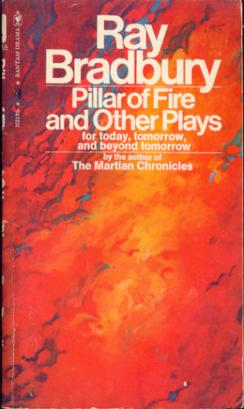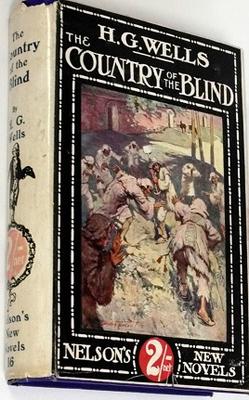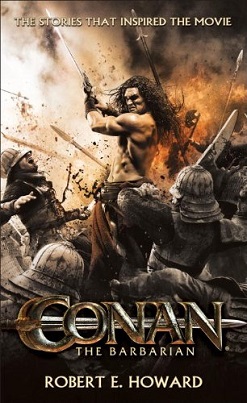
Pillar of Fire and Other Plays (1975) is a collection of three plays by Ray Bradbury: Pillar of Fire, Kaleidoscope, and The Foghorn. All are adaptations of his short stories of the same names. The genre of these works is science fiction.

A Memory of Murder (1984) is a collection of fifteen mystery short stories by American writer Ray Bradbury. They were originally published from 1944 to 1948 in pulp magazines owned by Popular Publications, Inc. that specialized in detective and crime fiction. Bradbury tried his hand in the genre but found the results unsatisfactory. He referred to the stories as "the walking wounded" in his introduction to A Memory of Murder.

Dennis William Etchison was an American writer and editor of fantasy and horror fiction. Etchison referred to his own work as "rather dark, depressing, almost pathologically inward fiction about the individual in relation to the world". Stephen King has called Dennis Etchison "one hell of a fiction writer" and he has been called "the most original living horror writer in America".

Bradbury Stories: 100 of His Most Celebrated Tales (2003) is a collection of short stories by Ray Bradbury. Bradbury wrote an introduction to the collection where he speaks about some of the inspirations, influences and among other things, the comedy duo Laurel and Hardy. The collection repeats no stories from The Stories of Ray Bradbury.

Conan the Barbarian is a collection of five fantasy short stories by American writer Robert E. Howard, featuring his sword and sorcery hero Conan the Barbarian, first published in hardcover by Gnome Press in 1955. The stories originally appeared in the 1930s in the fantasy magazine Weird Tales. This collection never saw publication in paperback; instead, its component stories were divided and distributed among other "Conan" collections. A later collection with the same title but different contents was issued in paperback by Del Rey/Ballantine Books in 2011.

The Country of the Blind and Other Stories is a collection of thirty-three fantasy and science fiction short stories written by the English author H. G. Wells between 1894 and 1909. It was first published by Thomas Nelson and Sons in 1911. All the stories had first been published in various weekly and monthly periodicals. Twenty-seven of the stories had also been previously published in five earlier story collections by Wells.

Casebook of the Black Widowers is a collection of mystery short stories by American author Isaac Asimov, featuring his fictional club of mystery solvers, the Black Widowers. It was first published in hardcover by Doubleday in January 1980 and in paperback by the Fawcett Crest imprint of Ballantine Books in March 1981.

The Small Assassin (1962) is a short story collection by American writer Ray Bradbury. The stories originally appeared in the magazines Dime Mystery Magazine, Weird Tales, Harper's, Mademoiselle, and in Bradbury's first book, Dark Carnival.
The Fog Horn & Other Stories is a collection of six short stories written by Ray Bradbury. The collection, published in Japan, is published in English for school use.
The Fog Horn and Other Stories is a collection of four short stories by Ray Bradbury. The collection, published in Japan, is published in English for school use.

The Last Circus & the Electrocution is a 1980 collection of two short stories by Ray Bradbury. "The Last Circus" is original to this collection. "The Electrocution" first appeared in The Californian in 1946 under the pseudonym William Elliot.

The Toynbee Convector is a short story collection by American writer Ray Bradbury. Several of the stories are original to this collection. Others originally appeared in the magazines Playboy, Omni, Gallery, Ellery Queen's Mystery Magazine, Woman's Day, and Weird Tales.

Classic Stories 2: From A Medicine for Melancholy and S Is for Space is a semi-omnibus edition of two short story collections by American writer Ray Bradbury, A Medicine for Melancholy and S is for Space. Stories from the original collections that are included in Classic Stories 1 are omitted.

Selected from Dark They Were, and Golden-Eyed is a collection that contains the Ray Bradbury short story "Dark They Were, and Golden-Eyed" with several essays about the story. It was published in 1991 by Signal Hill Publications as part of their Writers' Voices Series for students. The story first appeared in the magazine Thrilling Wonder Stories in 1949.
"None So Blind" is a science fiction short story by Joe Haldeman. It won the Hugo Award for Best Short Story and the Locus Award for Short Story in 1995, was nominated for the Nebula Award in 1994.

Isaac Asimov Presents The Great SF Stories 7 (1945) is an English language science fiction short story collection, edited by Isaac Asimov and Martin H. Greenberg. It is part of a series which attempts to list the great science fiction stories from the Golden Age of Science Fiction. They date the Golden Age as beginning in 1939 and lasting until 1963. The book was later reprinted as the first half of Isaac Asimov Presents The Golden Years of Science Fiction, Fourth Series with the second half being Isaac Asimov Presents The Great SF Stories 8 (1946).

Ursula K. Le Guin (1929–2018) was an American author of speculative fiction, realistic fiction, non-fiction, screenplays, librettos, essays, poetry, speeches, translations, literary critiques, chapbooks, and children's fiction. She was primarily known for her works of speculative fiction. These include works set in the fictional world of Earthsea, stories in the Hainish Cycle, and standalone novels and short stories. Though frequently referred to as an author of science fiction, critics have described her work as being difficult to classify.

Summer Morning, Summer Night is a collection of short stories by American writer Ray Bradbury, edited by Donn Albright and Jon Eller and first published by in 2002 PS Publishing. All the stories save one are set in Green Town, Illinois, Bradbury's name for his hometown of Waukegan, Illinois. Several of the stories feature some of the characters from his 1957 book, Dandelion Wine. Some stories are less than one page long.

Conan the Barbarian is a collection of six fantasy short stories written by Robert E. Howard featuring his seminal sword and sorcery hero of the same name, first published in paperback by Del Rey/Ballantine Books in July 2011 as a tie-in with the movie of the same title. The stories originally appeared in the 1930s in the fantasy magazine Weird Tales. An earlier collection with the same title but different contents was issued in hardcover by Gnome Press in 1955.
"Moving Spirit" is a science fiction short story by British writer Arthur C. Clarke, first published in 1957. The story within a comic story is narrated by Harry Purvis, who is called to assist a scientist relative of his in a trial. The scientist has been brought before the local magistrate's court on charges of illegally distilling liquor. Purvis manages to get him acquitted, by arguing that he was actually working on a fictional "osmotic bomb". Unfortunately Purvis accidentally demonstrates this bomb by exploding it in the courtroom, thus conveniently destroying all the evidence. However, the scientist is almost immediately booked for driving under the influence due to the strong smell of alcohol from his wet clothes.
















